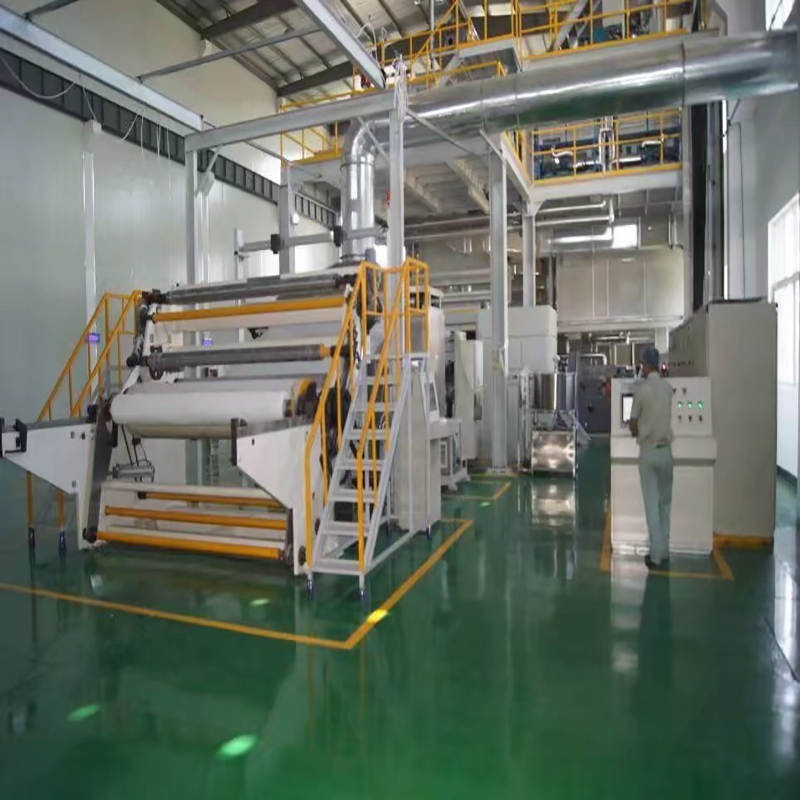En el panorama en constante evolución de la industria manufacturera, Las tecnologías y maquinaria innovadoras desempeñan un papel fundamental a la hora de impulsar la eficiencia., productividad, y calidad. Una de esas tecnologías que ha ganado un importante impulso es la maquinaria no tejida.. Telas no tejidas por fabricantes de maquinaria no tejida, con sus diversas aplicaciones en sectores como el sanitario, automotor, construcción, y más, han revolucionado la forma en que percibimos los textiles.
Comprensión de la maquinaria no tejida

Maquinaria no tejida se refiere a una gama de equipos especializados diseñados para la producción de telas no tejidas.. A diferencia de los textiles tradicionales que se forman tejiendo o tejiendo hilos juntos, Las telas no tejidas se fabrican uniendo o entrelazando fibras mediante métodos mecánicos., químico, o procesos térmicos. La maquinaria no tejida abarca varias etapas del proceso de producción., incluyendo preparación de fibra, formación web, consolidación web, y terminando. Estas máquinas están equipadas con tecnologías y componentes avanzados para garantizar un control preciso., producción de alta velocidad, y calidad constante de los tejidos no tejidos.
Componentes y tecnologías clave
La maquinaria no tejida comprende varios componentes y tecnologías clave que contribuyen a la producción eficiente de telas no tejidas.. Algunos componentes esenciales incluyen sistemas de apertura y mezcla de fibras., maquinas cardadoras, cruzados, telares de agujas, máquinas de unión térmica, y equipos de acabado. Cada componente realiza una función específica en el proceso general., como abrir y mezclar fibras, formando una red, consolidando la web, y aplicando tratamientos de acabado.
Tecnologías avanzadas, como sistemas de control computarizados, automatización, e inteligencia artificial, También se han abierto camino en la maquinaria no tejida.. Estas tecnologías ofrecen una precisión mejorada, monitoreo en tiempo real, y mayor eficiencia operativa, Lo que lleva a una mayor productividad y una calidad constante del producto..
Aplicaciones de telas no tejidas
Las telas no tejidas encuentran aplicaciones en una amplia gama de industrias debido a sus propiedades únicas y su versatilidad.. En el sector sanitario, Las telas no tejidas se utilizan para batas quirúrgicas., máscaras faciales, apósitos para heridas, y productos médicos desechables. La industria del automóvil utiliza telas no tejidas para tapizados de interiores, aislamiento acústico, y sistemas de filtración. Las empresas constructoras apuestan por telas no tejidas para geotextiles, aislamiento de edificios, y materiales para techos. Los tejidos no tejidos también encuentran aplicaciones en la agricultura, filtración, embalaje, y productos de higiene como pañales y toallitas.
La capacidad de personalizar telas no tejidas alterando la composición de las fibras., densidad, y los métodos de unión permiten a los fabricantes satisfacer requisitos específicos de la industria y crear soluciones innovadoras..
Ventajas de la maquinaria no tejida
La maquinaria no tejida ofrece varias ventajas sobre los métodos tradicionales de producción textil.. En primer lugar, Las telas no tejidas se pueden fabricar a alta velocidad., lo que resulta en una mayor productividad y menores costos de producción.. La flexibilidad de la maquinaria no tejida permite cambios rápidos de productos y personalización., permitiendo a los fabricantes responder rápidamente a las demandas del mercado. Además, Las telas no tejidas se pueden producir en varios espesores., densidades, y texturas, proporcionando una amplia gama de opciones para diferentes aplicaciones.
La maquinaria no tejida también promueve la sostenibilidad al minimizar el desperdicio de material.. El proceso de producción de telas no tejidas genera menos desechos en comparación con los textiles tradicionales, y se pueden incorporar fibras recicladas al proceso de fabricación, reduciendo aún más el impacto ambiental.
Tendencias e innovaciones futuras
La industria de la maquinaria no tejida está en continua evolución., Impulsado por los avances tecnológicos y las demandas del mercado.. Las tendencias futuras incluyen la integración de sensores inteligentes para el monitoreo de procesos en tiempo real., el desarrollo de tejidos no tejidos ecológicos y biodegradables, y la exploración de la nanotecnología para mejorar la funcionalidad y el rendimiento..
